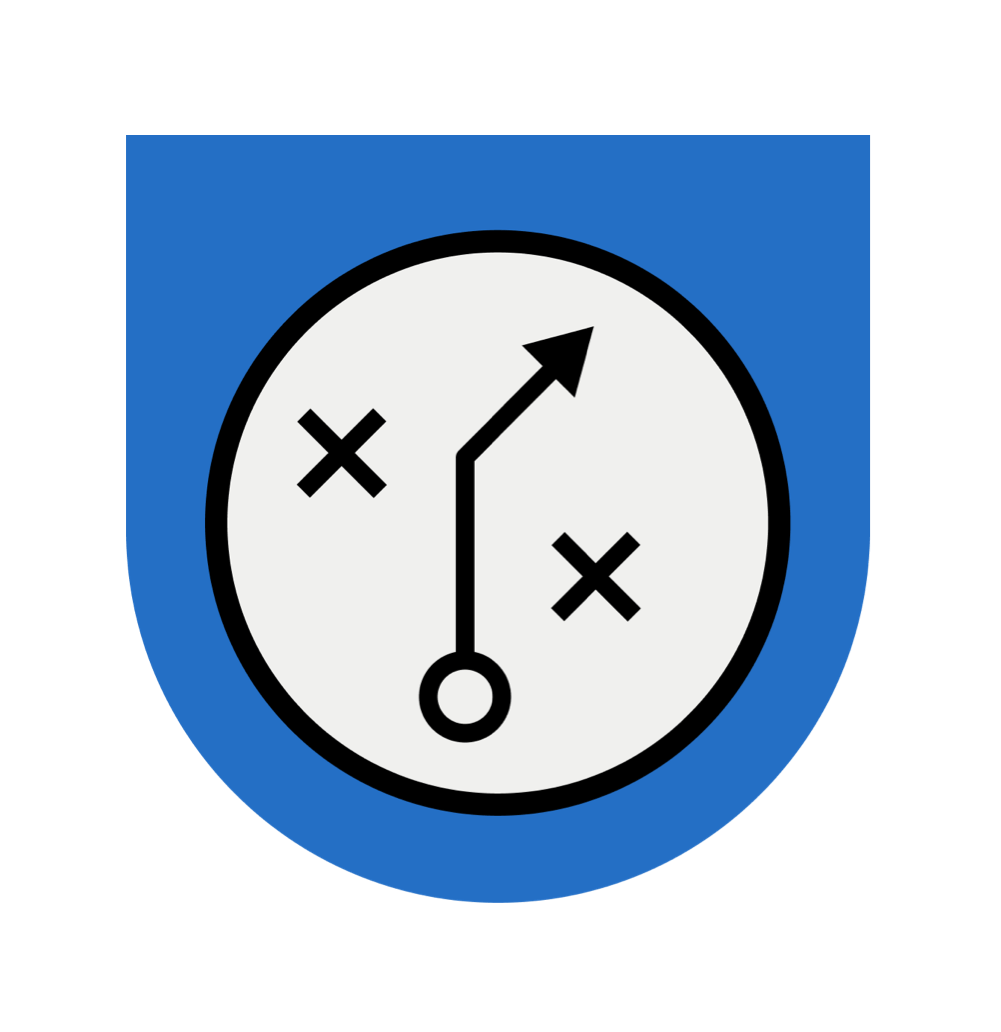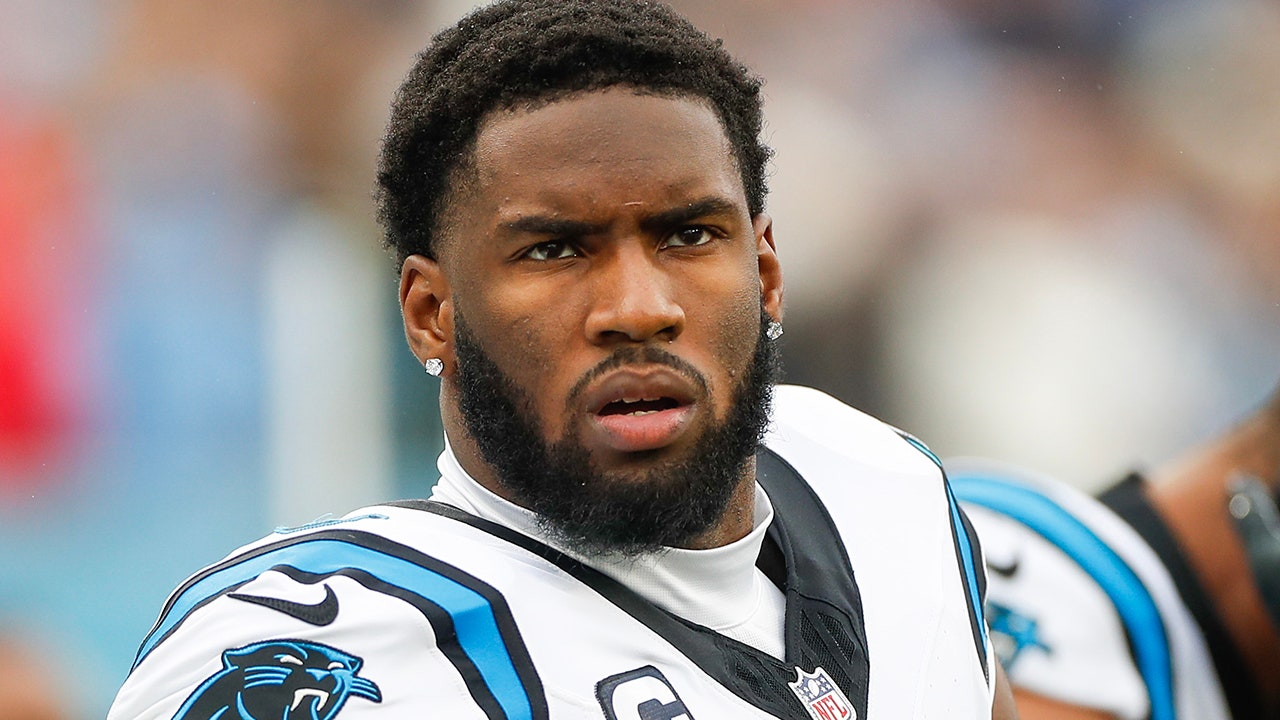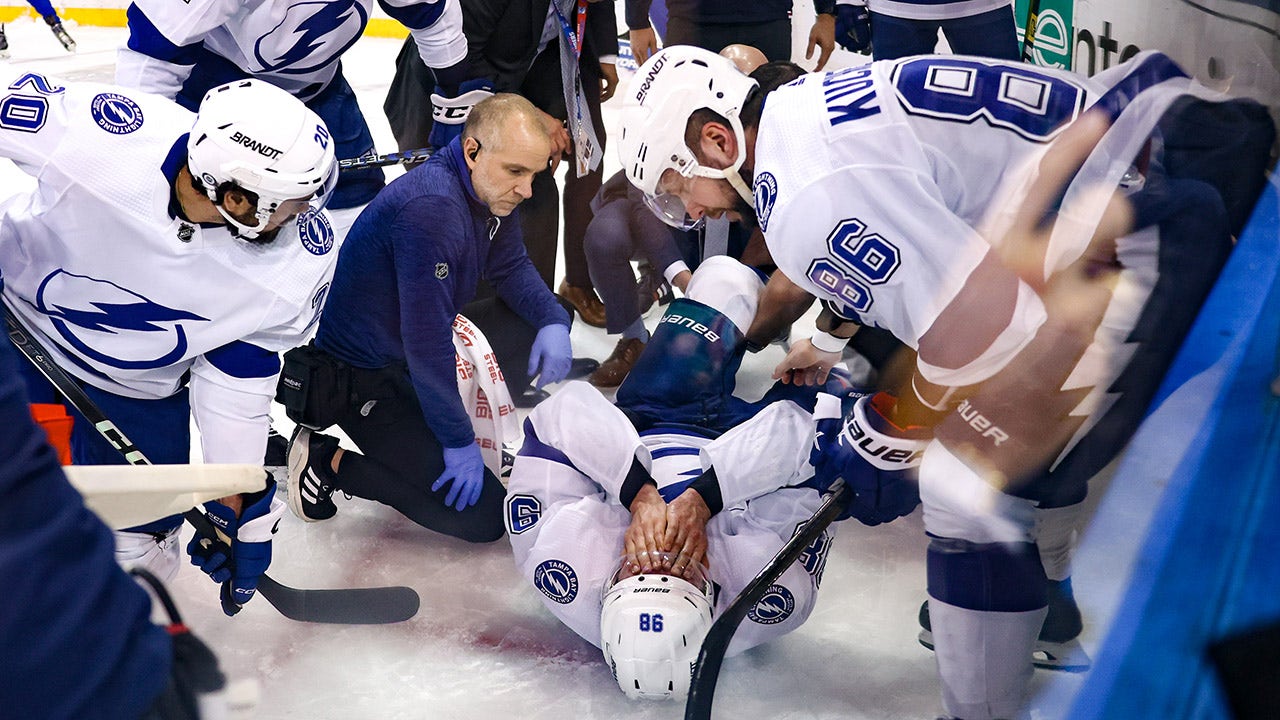Growing up playing high school football in the early 2000s, the dream of seeing someone who looked like me playing at the highest level of a sport I loved was one I gave up on early in my youth. For many, representation at the pinnacle of something you obsessed over can be taken for granted. For Asian American kids in sports at the time, it was practically nonexistent. So when I first saw the “Nguyen” nameplate on the back of an NFL jersey, I was in genuine awe.
Someone with my last name in the NFL? And he wasn’t a kicker (not that there is anything wrong with that). He played linebacker, one of the most physical positions in sports, for the Dallas Cowboys.
That jersey belonged to Dat Nguyen, the All-Pro linebacker, who cemented himself as a legend at Texas A&M. He didn’t just have a spot on the roster, he was one of the best defenders in the league. Not only did it make it seem a little more possible that Asians could play in the NFL, but it also created a different type of connection to pro football that I didn’t have before.

Free, daily NFL updates direct to your inbox. Sign up
Free, daily NFL updates direct to your inbox. Sign up
Buy
We aren’t related — Nguyen is an incredibly common last name — but for me and the Asian kids from my generation who got to watch him, he represented us on the field. He broke a barrier we didn’t think could be broken, shattering it with every bone-rattling tackle. May is Asian American, Native Hawaiian and Pacific Islander Heritage Month and a good time to reflect on the history Nguyen made and how he got there.
Discovering football
Nguyen and his family shared a similar experience as many Vietnamese migrants in America in the ’80s. During the Vietnam War, his parents made the harrowing escape by boat as the Viet Cong overtook their homes in Vietnam. They started their new lives in a refugee camp in Arkansas before moving to Texas, where Nguyen would grow up and discover football.
His family took up shrimping, a common occupation among Vietnamese immigrants because they did it in their homeland. Beginning in fourth grade, Nguyen spent each summer on the family boat as his brother’s deckhand.
Nguyen’s junior high school coach, Cliff Davis, discovered him while walking the halls looking to recruit kids to play football. Nguyen was nearly 5-foot-10 in eighth grade and could already dunk a basketball. He stood out from his friends. However, his parents initially didn’t support his playing football and wanted him to focus on academics. Nguyen forged their signatures to sign up for the football team.

Dat Nguyen, left, with his family at the premiere of “All American: The Dat Nguyen Story,” a documentary about his football journey, in 2023. (Courtesy of Nguyen family)
He didn’t know much about the sport, but as he learned more, he quickly fell in love with the mental side of the game.
“I was very fortunate and grateful that (Davis) taught me to visualize,” Nguyen, now 48, explained. “We went to the gym before the football game and he shared with us a moment. And the moment was when you closed your eyes and you play the play in your mind, saw the play before it happened, called the defense, adjust to the offensive formation, snap the ball and just see it. If it’s a run, if it’s a pass — what’s your responsibility? What’s your alignment? What’s your adjustment? All that quickly has to be diagnosed or decided within a few seconds. If you played it in your mind and you saw it the night before and you line up in the game, it’s a lot easier when you just don’t have to think … you just react.”
Nguyen’s athleticism and instinctual style of play helped him quickly excel on the gridiron, but his double life almost halted when he broke his elbow diving for a fumble toward the end of his eighth-grade season. His parents found out he was hurt playing football but realized he was passionate about the game and that it kept him out of trouble, so they let him continue to play. As he played high school football, the cerebral nature of the sport continued to compel him.
“I fell in love with the game because it was fascinating to me,” he said. “I was one of the 11 guys every time the puzzle was moved. As I got older, the game was so much more interesting because of the situations in football.”
Breaking out with the Aggies
Nguyen became a star for his hometown team and had people from every background chanting his name, but his parents came to only two games. His mom worked two jobs and his dad was on the boat all day. Plus, entering a crowded stadium full of people who didn’t speak their language was daunting. It wasn’t until Nguyen got a scholarship to Texas A&M that he truly felt they embraced his football career.
When he first got to Texas A&M, he thought he was too small and needed to gain weight to be an effective college player, but then he got too big. He couldn’t move effectively and he slid down the depth chart. He almost gave up on playing college football but recommitted himself in the offseason. He woke up at 6 a.m. every day to work out on his own, went to class at 8 a.m. and got in a second workout at noon before working out with his team at 4 p.m. He got into fantastic shape and surprised the team and coaching staff with his body transformation.
He worked his way up from eighth on the depth chart to No. 2. The only linebacker ahead of him was Trent Driver, who had prototypical size and speed. One day, while running sprints, Driver twisted his ankle on a sprinkler. Nguyen got his shot, and the rest was history. He became an Aggies legend, starting 51 consecutive games and amassing 517 tackles and six interceptions.
Dat Nguyen is one of the greatest defensive players in @AggieFootball history. The @cfbhall linebacker is the only player in @TAMU history to lead the team in tackles four consecutive seasons and still holds school records with 517 career tackles and 30 double-digit tackle games!… pic.twitter.com/6Hvg13Qlb4
— College Football Hall of Fame (@cfbhall) September 25, 2023
His parents started coming to his home games, and for the away games, they would have company come over to watch their son play on TV. They picked up how the game worked, but the magnitude of how big football was, especially in Texas, was hard to grasp. Their son went from helping them on a shrimp boat to playing on national television.
Nguyen had one of the best games of his career in the 1998 Cotton Bowl against UCLA, but when he talked about the game, he didn’t highlight the win or his interception and lateral for a touchdown or the fact that he was named MVP of that game. He talked about the feeling when he found out his parents, who were across the country for a wedding, were gathered around a TV with friends and family hooting and cheering him on in the Cotton Bowl.
“That might be the best game of my career,” Nguyen said. “I still have some records there in the Cotton Bowl, and it’s not like some of those records might not be broken, right? And for them to witness that with relatives and family and gatherings and in another state … yeah, that was pretty cool for them to share with me.”
Growing up in an Asian household, winning the approval of the family sometimes felt like chasing after a carrot on a stick that was tied to your back. When you’ve achieved the status of state legend and get a free education out of it, no parent, no matter how high their standards, could resist cheering.
How ’bout them Cowboys?
The next achievement to check off was getting drafted. Though Nguyen had gaudy statistics and accolades, he was still undersized (5-11, 234 pounds at the 1999 NFL Scouting Combine) in an era of football when the prototypical linebacker was 250 pounds. Nguyen was one of Dallas’ top-30 visits, so although the Cowboys were interested, he knew he wouldn’t be a first-round pick.
The draft spanned two days back then. On the first day, Nguyen helped a friend move and went to a kid’s birthday party before ending up at his mom’s house where they would watch the end of day one of the draft together. Nine linebackers with better measurables got drafted before him. He then got the call from Jerry Jones. The Cowboys drafted him in the third round. Nguyen would be playing pro football in his home state.
“I landed in Dallas and I thought, ‘Your family left Vietnam to come here just for freedom and you get the chance to play this game we called the American sport and you get drafted by America’s Team,’” Nguyen said.
He remembered in his first OTAs getting into the defensive huddle, getting the signal and calling the defense — something he’d done thousands of times. No big deal. He then looked across and saw Troy Aikman and Emmit Smith, and to his left was Michael Irvin. When the ball was snapped, Nguyen froze and didn’t move. These were guys he watched every Sunday, and just sharing the field with them caused him to short-circuit for a second. Though there were some historically big personalities in the Dallas locker room, he said they respected his play and he never felt ostracized for his ethnicity.

Dat Nguyen celebrates a fumble recovery for the Cowboys during a game in 2005. (Tim Heitman / USA Today)
Bill Parcells was hired as head coach in 2003, Nguyen’s fifth year in the league. Parcells came from a 3-4 defensive background and preferred bigger, more physical linebackers. Nguyen was quick, undersized and made plays because of his anticipation and angles.
The old-school Parcells wasn’t easy to impress. But as Nguyen had done his entire football career, he made his size an afterthought and earned Parcells’ trust. Nguyen had a career year in his first season playing for him and was named second-team All-Pro.
“I learned more football with (Parcells) than my 15 years prior,” Nguyen said. “He made the game very interesting. Situational football was a big part of what he did, and I really learned a lot about the game on that aspect of it. He’s a guy that really cares about you as a person even though at times he doesn’t feel like he does. But I’ll send him a text right now, and he’ll text me back. I feel like I’m in that inner circle with him, and it’s hard to get in that inner circle.”
“He could have played for any of my teams,” Parcells would later say after coaching Nguyen.
Injuries pile up
Nguyen shined brightly when he was on the field, but injuries took a toll on his body. In 2004, playing the Pittsburgh Steelers, some Cowboys defenders had a bet on who would put the biggest hit on Jerome Bettis. Early in the game, Nguyen saw his chance. The play unfolded in slow motion. He watched quarterback Ben Roethlisberger turn around to hand the ball off to Bettis.
“I was like, ‘Oh, shoot, I’m beelining him. I’m about to win this pot,’” he said. “So I’m about to blow him up. All of a sudden I get blown up from somewhere else.”
Steelers receiver Hines Ward blindsided and de-cleated him. His legs were 6 feet in the air and he smashed his head on the ground. The next thing he could remember was the trainer bringing him to his wife and explaining to her that he had a severe concussion.
He went the next morning to the facility to work out, get treatment and attend his position meeting. In his meeting, he looked down at his grade sheet and saw he was given a positive grade on 63 out of 64 plays. He realized he’d just played one of the best games ever — the problem was, he didn’t remember anything past the blindside hit.
The following season, he prepared hard and felt great. He thought he would have a career year but injured his knee in training camp and had meniscus surgery before the season. During a West Coast trip in which they played the 49ers and Raiders, he hurt his neck against the 49ers but played through it. He completed a Cowboys comeback with a game-sealing interception but knew something wasn’t right.
“I remember calling my wife the morning I woke up,” Nguyen said. “I was like, my knees are bothering me. My neck’s bothering me. I don’t feel right.”
After the Raiders game, on the flight back to Dallas, he sat next to Dan Campbell, Nguyen’s teammate with the Cowboys and at Texas A&M.
“I was like, ‘Dan, man, I can see the plays. I can’t get there.’ Like I worked so hard in the off-season just to get a chance to get the edge, right? I put so many hours into it, but I think my body’s just breaking down.”
The next morning, Nguyen told Parcells he needed to take some time off to recover and regroup, and Parcells obliged. Nguyen tried coming back on Thanksgiving, but his body didn’t respond. His arm went numb every time he got hit.

Dat Nguyen is recognized during halftime of a Dallas Cowboys preseason game in 2006 for his contributions to the team. (Khampha Bouaphanh / Getty Images)
“So that’s when I knew it was over,” Nguyen said. “I was glad I was able to walk away. And, you know, you miss it. I’m sorry, you miss the locker room. You miss the competition. You miss the four seconds of the game when the ball snaps. I can’t explain this to anybody or share it with people because it’s so unique.”
Nguyen retired in 2005 and went on to have brief stints coaching with the Cowboys and Texas A&M. He’s earned several accolades since his retirement including making the Texas A&M Athletic Hall of Fame, All-Time Big 12 Team and the Texas Sports Hall of Fame. But his seven seasons, a relatively long career, were not enough to get Pro Football Hall of Fame consideration. Though he won’t be enshrined in Canton, his career was truly unique. He was the first Vietnamese player to be drafted in the NFL and the only one to date. Nguyen was a barrier breaker, and he hopes his story can inspire other Asian kids to follow in his footsteps.
“I thought when you broke the barrier back then when I was playing, I was hoping that it was open to people,” he said. “I was hoping that more kids would be participants. It’s hard to find. … I mean, even my nephew, that’s going to graduation tonight, he’s a good ball player. I don’t think he’s a DI player, but I think he’s able to play DIII if he wants to pursue it. And then (many kids wave) off the option, but it’s like, man, you never know how you develop your body. It might be small stature, but man, a lot of times, football teaches you so much. But the opportunity to make it and fulfill a dream, man, it’s like no other, though. And I think a lot of them don’t want to pursue it because the chances are against them, which it is.”
(Top photo: Al Messerschmidt and Doug Pensinger / Getty Images)






